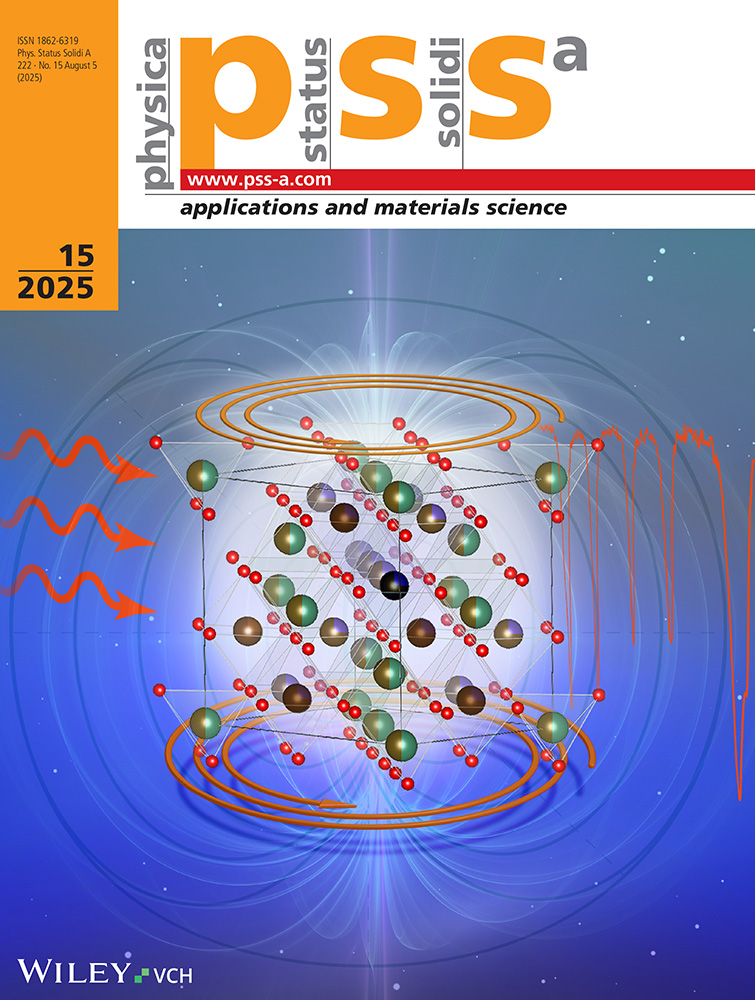A study of the annealing of the 830 cm−1 IR band observed in electron-irradiated silicon
P.O. Box 1165, S-58111 Linköping, Sweden.
Abstract
enThe annealing behavior of the 830 cm−1 (vacancy-oxygen center) IR band caused by electron-irradiation of oxygen containing silicon is studied in silicon samples with different thermal history. As the 830 cm−1 IR band anneals out during isothermal annealing at 304 °C, a new strong IR band appears at 889 cm−1. Experimental evidence is presented, which strongly indicates, that the new 889 cm−1 IR band is related to an infrared active center which contains two oxygen atoms. The efficiency with which 889 cm−1 IR active centers are formed from VO-centers, is found to depend on the residual carbon concentration and possibly on the thermal history of the specimens. Therefore annealing of the VO-center can occur via several competing mechanisms.
Abstract
deIn Siliziumproben unterschiedlicher thermischer Vorgeschichte wird das Temperungsverhalten der 830 cm−1 (Vakanz-Sauerstoff-Zentrum)-IR-Bande untersucht, die durch Elektronenbestrahlung von sauerstoffhaltigem Silizium verursacht wird. Während die 830 em−1-IR-Bande während isothermer Temperung bei 304 °C ausheilt, tritt eine neue starke IR-Bande bei 889 cm−1 auf. Experimentelle Hinweise werden dargestellt, die deutlich zeigen, daß die neue 889 cm−1−IR-Bande mit einem infrarotaktivem Zentrum verbunden ist, das zwei Sauerstoffatome enthält. Es wird gefunden, daß die Effizienz, mit der 889 cm−1−IR aktive Zentren aus den VO-Zentren gebildet werden, hängt von der Restkohlenstoffkonzentration und möglicherweise von der thermischen Vorbehandlung der Proben ab. Deshalb kann ein Ausheilen der VO-Zentren über mehrere konkurrierende Mechanismen auftreten.




